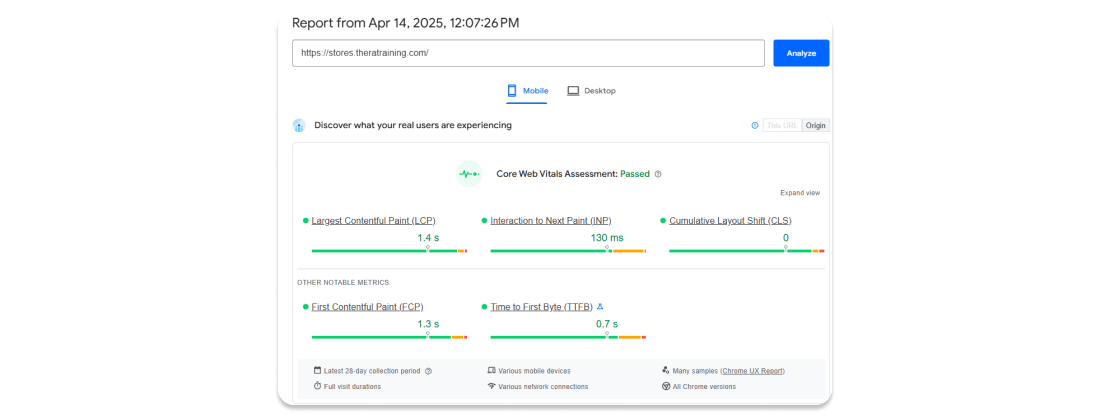
When most people think of search engine optimization (SEO), their minds immediately go to keywords, backlinks, and meta descriptions. While these are essential components of a solid SEO strategy, they only scratch the surface. Behind the scenes, Google is increasingly prioritizing one factor that many overlook: user experience (UX).
User experience refers to how easily and enjoyably a visitor can interact with your website. It includes everything from page speed and mobile responsiveness to site navigation and content clarity. Google’s ultimate goal is to provide users with the most relevant and satisfying results, so it makes sense that sites offering a superior experience are rewarded with higher rankings.
In this blog, we’ll explore how user experience impacts SEO, why it matters now more than ever, and what eCommerce brands can do to create websites that not only convert but also climb the rankings.
Google’s Algorithm Is Smarter Than You Think
In the early days of SEO, ranking was largely a technical exercise. If you had the right keywords and enough links, your page would shoot to the top of the search results. But today, Google’s algorithm is significantly more sophisticated. Through machine learning and constant updates, it has evolved to measure how users interact with a website.
Click-through rates, bounce rates, time on site, and engagement with on-page elements all provide valuable signals to Google. If users consistently land on your site and leave quickly, it’s a red flag. On the flip side, if they stay, explore multiple pages, and interact with content, it signals quality.
This is where UX enters the conversation. A well-designed, intuitive, and fast-loading site keeps users engaged. That engagement, in turn, tells Google that your site deserves better visibility.
Core Web Vitals and the UX-SEO Connection
One of the clearest indicators of Google’s commitment to UX as a ranking factor is the introduction of Core Web Vitals. These metrics assess aspects of user experience like loading performance, LCP (Largest Contentful Paint), interactivity (First Input Delay), and visual stability (Cumulative Layout Shift).
 Therapeutic Training Center’s Google Core Web Vitals
Therapeutic Training Center’s Google Core Web Vitals
If your site performs poorly on these metrics, you can expect it to be penalized in search results. Conversely, optimizing for these signals doesn’t just improve UX—it also helps your site gain a competitive edge in SEO.
For example, a slow eCommerce website with a cluttered layout and frustrating navigation might rank below a competitor that offers a sleek, intuitive browsing experience, even if both have similar content.
Site Structure and Navigation: The Backbone of Good UX
Another critical element of user experience is site structure. When your navigation is clear, your URLs are logical, and your internal linking is strong, users can find what they need quickly. This doesn’t just lead to better engagement; it also allows search engines to crawl and index your pages more effectively.
From an SEO perspective, good site structure ensures that link equity flows through your website efficiently. From a UX standpoint, it reduces friction, enabling users to move seamlessly from product pages to checkout, or from blog content to related services.
A clean and well-organized navigation menu, an easy-to-use search bar, and intuitive page hierarchy are more than nice-to-haves—they’re SEO boosters in disguise.
Mobile Experience: More Important Than Ever
With mobile devices now accounting for more than half of global web traffic, your mobile experience can make or break both your UX and your SEO performance. Google has fully moved to mobile-first indexing, meaning it primarily uses the mobile version of a site for indexing and ranking.
If your mobile site is difficult to use, loads slowly, or lacks important features, it will hurt your search visibility. Responsive design, thumb-friendly navigation, and fast load times on mobile devices are all essential.
In addition, features like tap targets, font size, and the spacing of clickable elements matter more than you might think. They directly impact user satisfaction and are considered in Google’s algorithm when determining rankings.
Content Experience: It’s More Than Just Words
The quality and relevance of your content have long been important for SEO, but now the way that content is presented also plays a major role. Blocks of text with poor formatting, unreadable fonts, or intrusive ads create a frustrating experience, driving users away.
Conversely, a page that features scannable headers, bullet points, embedded media, and a clear visual hierarchy keeps users engaged. This increases time on page and lowers bounce rates, which are strong behavioral signals to Google that your content is valuable.
For eCommerce brands, this is especially crucial. product descriptions, FAQ sections, how-to guides, and customer reviews all need to be structured for readability and engagement.
Trust and Credibility as Ranking Signals
Another aspect of user experience that often goes unnoticed is the perception of trust and credibility. Secure checkout processes, visible contact information, SSL certificates, and a modern, professional design all contribute to a trustworthy feel.
Google evaluates trust signals, including whether your site uses HTTPS, whether it’s free of malware, and whether it adheres to structured data best practices. These elements not only enhance the user experience but also send confidence signals to both users and search engines.
A user who trusts your brand is more likely to return, convert, and refer others—all of which contribute to better organic rankings over time.
UX Isn’t a Bonus – It’s a Ranking Factor
The main takeaway? User experience is not just something that makes your site look good. It’s a fundamental piece of modern SEO. Google doesn’t want to serve users pages that frustrate them or make them wait. Every lag, poor layout, or confusing interaction costs you in both engagement and search visibility.
Investing in UX—whether that’s through better design, faster load times, or clearer content—is an investment in your SEO success. As competition increases and Google’s algorithm becomes even more user-centric, the brands that prioritize experience will be the ones that rise to the top.
If your rankings are stuck or slowly slipping, it might be time to stop looking at just backlinks and keywords, and instead audit your site experience. Chances are, improving UX could unlock the organic growth you’ve been missing.
Need help improving your site’s performance or UX strategy? Contact us for a consultation—we’ll help you build an experience that drives traffic and conversions.

 Eashan Mehta
Eashan Mehta


![Social Media Marketing for eCommerce Success in [Year] Social Media Marketing for eCommerce Success in [Year]](http://makdigitaldesign.com/wp-content/uploads/2025/11/master-social-media-marketing-for-ecommerce-success.webp)


